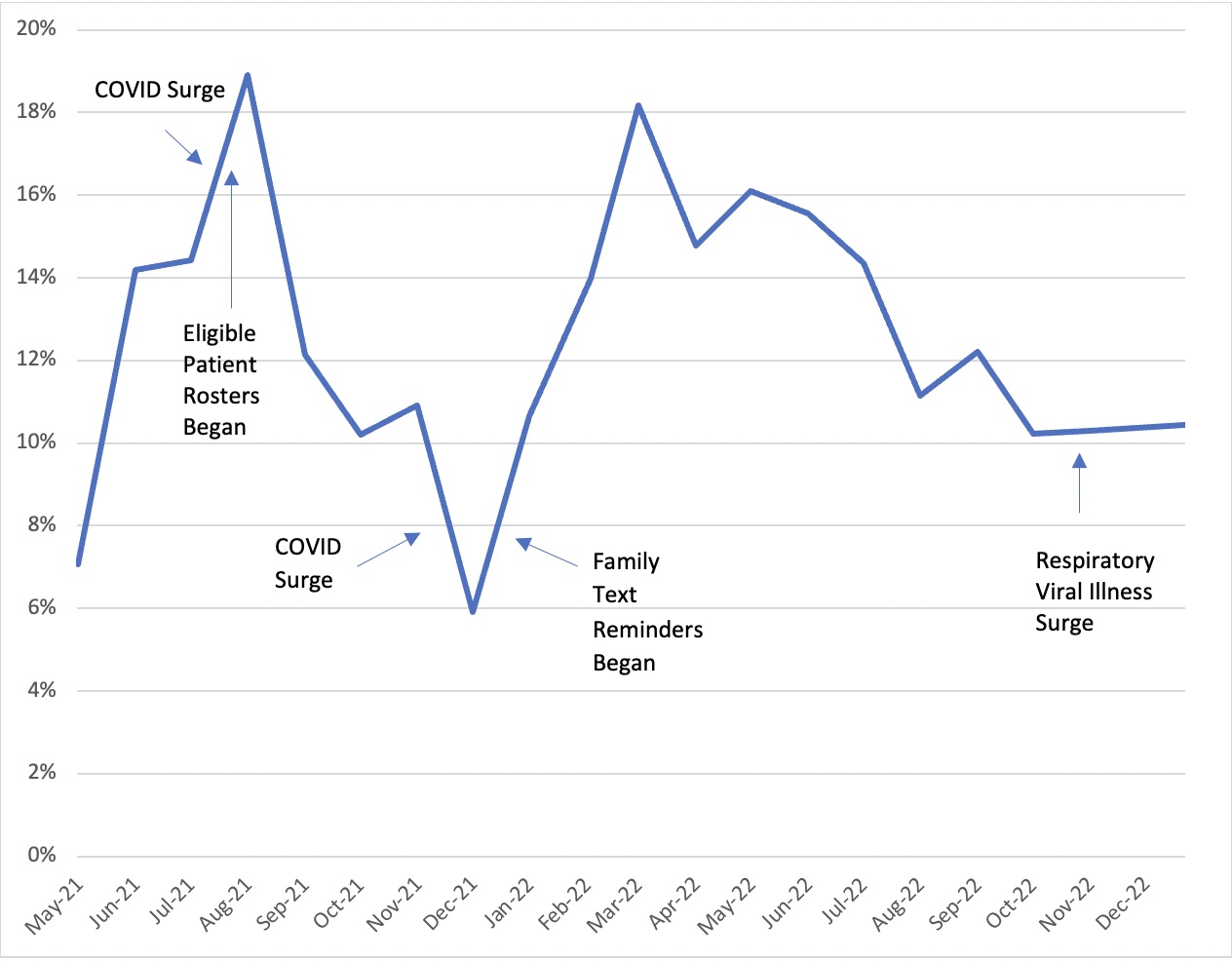Injury Prevention
Injury Prevention 1
141 - Testing a New Care Model: Implementing a Virtual Driving Assessment in Pediatric Primary Care
Publication Number: 141.121

Shannon Kelleher, MPH (she/her/hers)
Clinical Research Coordinator
The Children's Hospital of Philadelphia
Philadelphia, Pennsylvania, United States
Presenting Author(s)
Background:
Motor vehicle crashes are a leading cause of death for youth, and most crashes are due to driver error.
Objective:
To implement a Virtual Driving Assessment (VDA) into adolescent well visits at a large pediatric primary care network to assess driving skills and provide customized feedback to help teenagers avoid common driving errors.
Design/Methods:
Between May 2021- December 2022, we conducted a single arm implementation study utilizing the IHI Innovation Methodology, an iterative testing and refinement process. The VDA is a validated 15 minute self-guided virtual driving test. 18 urban, suburban, and semi-rural primary care sites integrated the VDA into the adolescent well-visit for teens 15 years of age and older. A multi-disciplinary stakeholder group, including clinical champions, driving experts, innovation specialists, administrative leaders, parents and teen advisors, provided input to implement strategies addressing key barriers to expanded VDA use. We measured the proportion of eligible teens by site who completed a VDA at their well-visit monthly and overall and collected user satisfaction feedback.
Results:
In total, 16,736 eligible patients had a well visit during the implementation period. Among these adolescents, 2,161 completed a VDA with an overall median network completion rate of 11% (IQR: 5-17%, Figure 1), with some sites achieving up to 31% completion rate across the study period. There were notable rate changes over the study period around COVID and winter viral surges (Figure 1). Those completing the VDA were more likely to be 16 or 17 years old compared to 15 years of age (p-value < 0.001); and the majority had not yet received a license or permit. Key implementation barriers identified by stakeholders included workflow variability by site and additional time needed to complete the VDA. To address stakeholder feedback, we implemented in-office interventions such as distributing weekly eligible patient reports which were posted in staff areas. A text messaging strategy was created to alert families that the VDA would be available at well-visits.
76% of teens completing the satisfaction survey both agreed or strongly agreed that they would recommend the VDA to their friends and that they would take the VDA again.
Conclusion(s):
Implementing a novel virtual driving assessment into the adolescent well visit in a busy primary care setting is feasible and desired by teens, although barriers remain. This project provides a model for integrating innovative technologies into primary care to address salient health risks.
